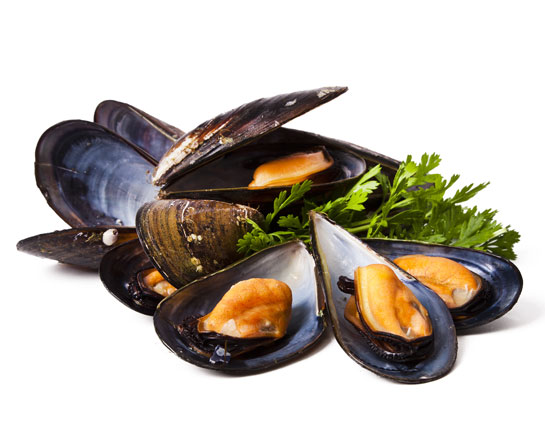MUSSELS
May 8, 2022 Return

WORDS RACHEL SOON
In New Zealand, the green-lipped mussel (scientifically named Perna canaliculus) has been regularly eaten by indigenous Maori people for centuries.
According to local history, people from Maori tribes living by the country’s coast had often told their European neighbours that the mussels helped them stay in good health.
Curious, medical researchers took a closer look. They noticed that there were far fewer cases of arthritis among coastal Maori people compared to those living inland or people from European backgrounds.
Mussels and arthritis
Coincidentally, in the 1960s, US scientists had been on a mission to find new anti-cancer drugs by looking among marine animals. When they came across the New Zealand green-lipped mussel, they didn’t find what they were looking for, but they did instead find out that the mussel seemed to help reduce inflammation. This sparked an interest in testing out what this clan of clams could do for inflammation-related health problems.
Since then, multiple small-scale studies in people have found some evidence that adding green-lipped mussels to one’s regular diet can help relieve pains from mild-to-moderate osteoarthritis, as well as rheumatoid arthritis.
While it’s hard to pinpoint the components of the mussels responsible for soothing inflamed joints, some possible candidates include:
• Omega-3 fatty acids. Omega-3 fatty acids are popularly known for their heart health benefits, but they’ve also shown some anti-inflammatory effects.
• Furan fatty acids (F-acids). Also a fish oil component, F-acids have shown some potent antioxidant abilities.
However, before you start binging on mussels thinking they’ll get rid of your joint aches, keep in mind that trial results have been mixed; some of them showed little or no effect. Part of the problem was that the amount and type of mussel preparation in the various studies—whether fresh or freeze-dried, whole mussel or extract thereof—varied a lot, making it difficult to say just how much mussels and how often they should be taken to make an impact.
References: 1. Mayo Clinic. (n.d) Arthritis: symptoms & causes. https://www.mayoclinic.org/diseases-conditions/arthritis/symptoms-causes/syc-20350772 2. Wane, J. (2017, May 3). Mussel power: how the green-lipped mussel became NZ’s first ‘superfood’. Noted. https://www.noted.co.nz/health/health-nutrition/mussel-power-how-the-green-lipped-mussel-became-nzs-first-superfood 3. Ulbricht, C., et al. (2009). An evidence-based systematic review of green-lipped mussel (Perna canaliculus) by the Natural Standard Research Collaboration. J Diet Suppl.;6(1):54-90. 4. Calder, P.C. (2010). Omega-3 fatty acids and inflammatory processes. Nutrients;2(3):355-374. 5. Wakimoto, T., et al. (2011). Furan fatty acid as an anti-inflammatory component from the green-lipped mussel Perna canaliculus. Proc Natl Acad Sci U S A.;108(42):17533–17537. 6. Food and Agriculture Organization of the United Nations. (n.d). Cultured aquatic species information programme: Perna canaliculus. http://www.fao.org/fishery/culturedspecies/Perna_canaliculus/en
